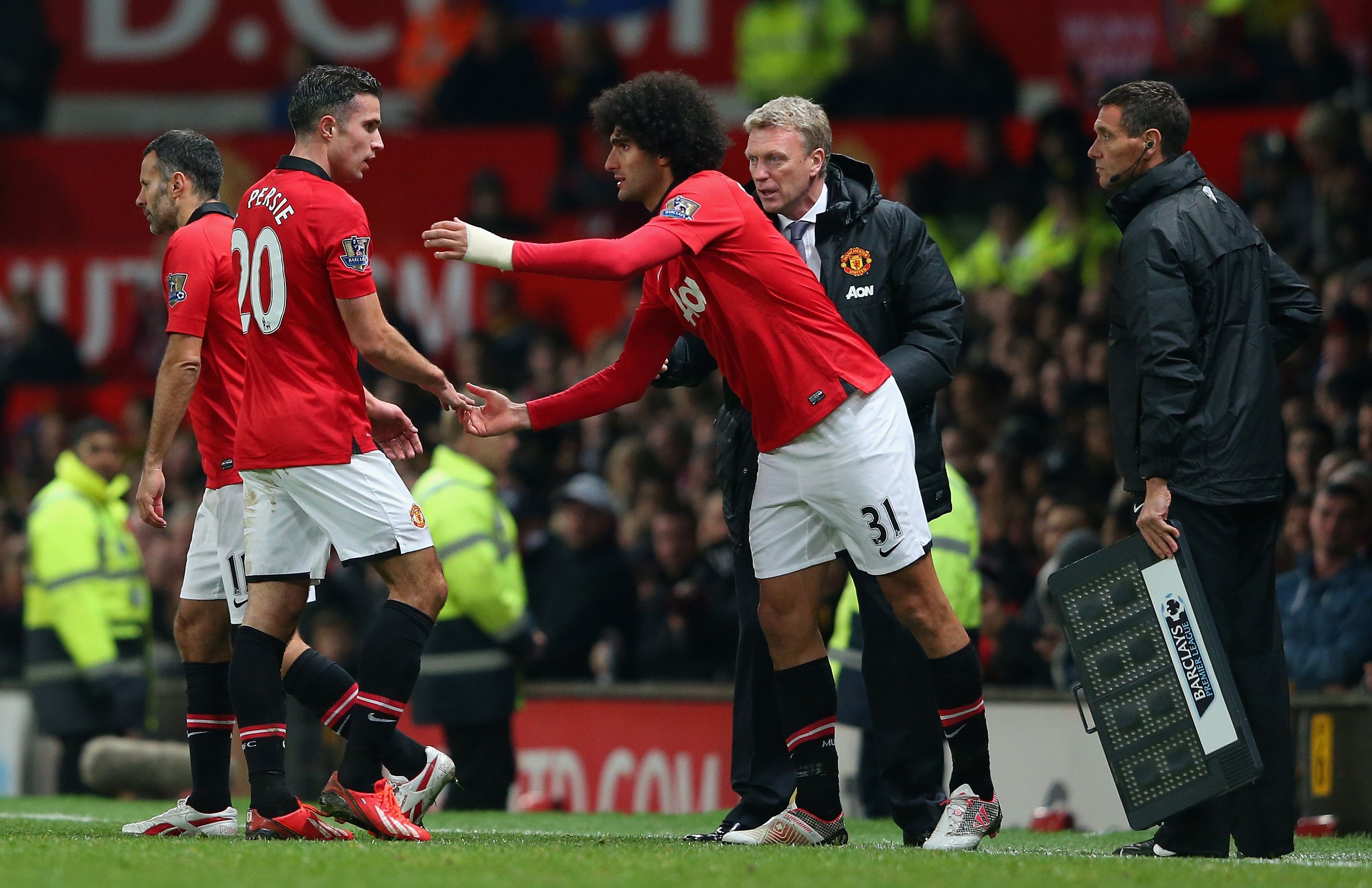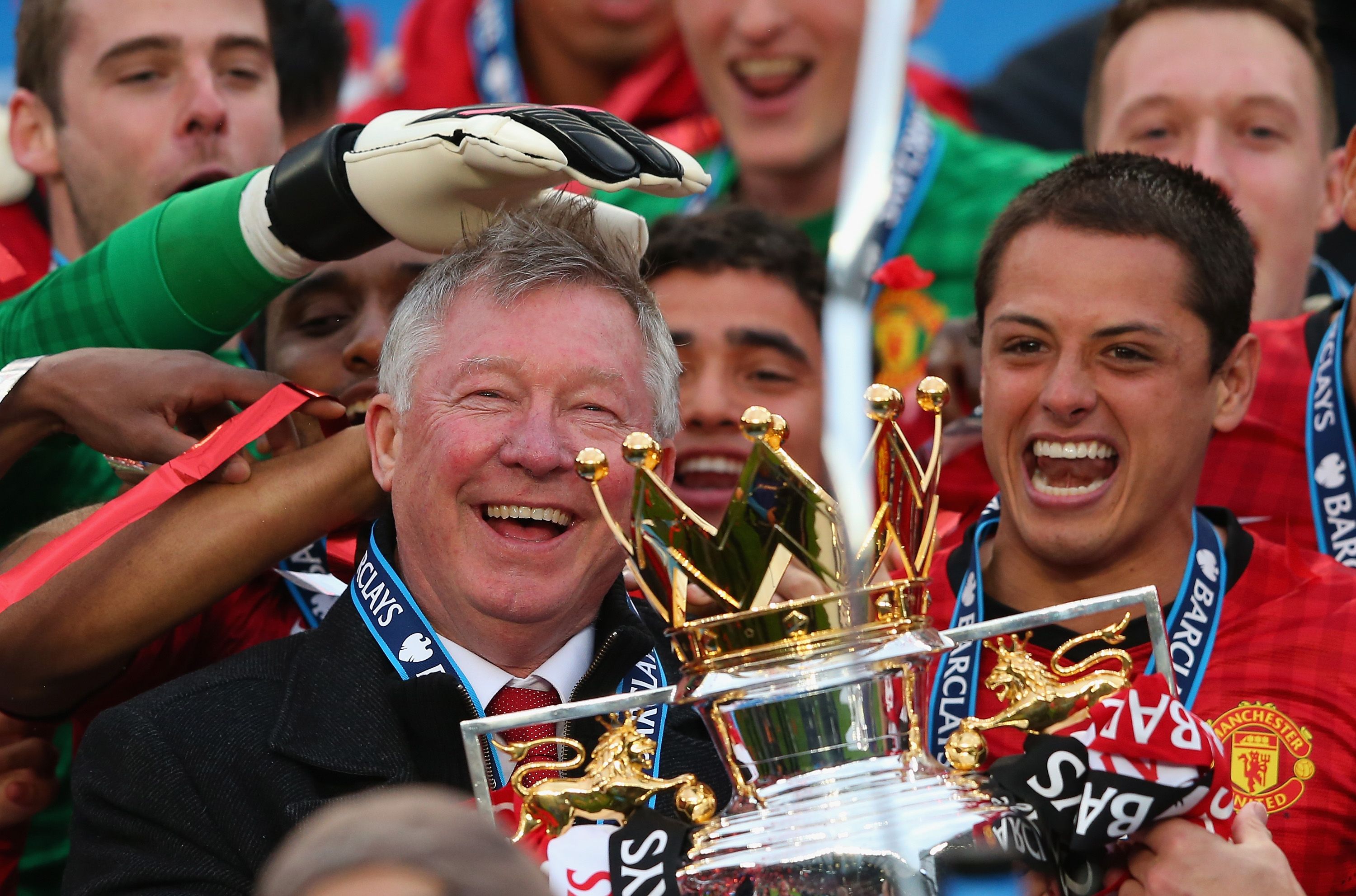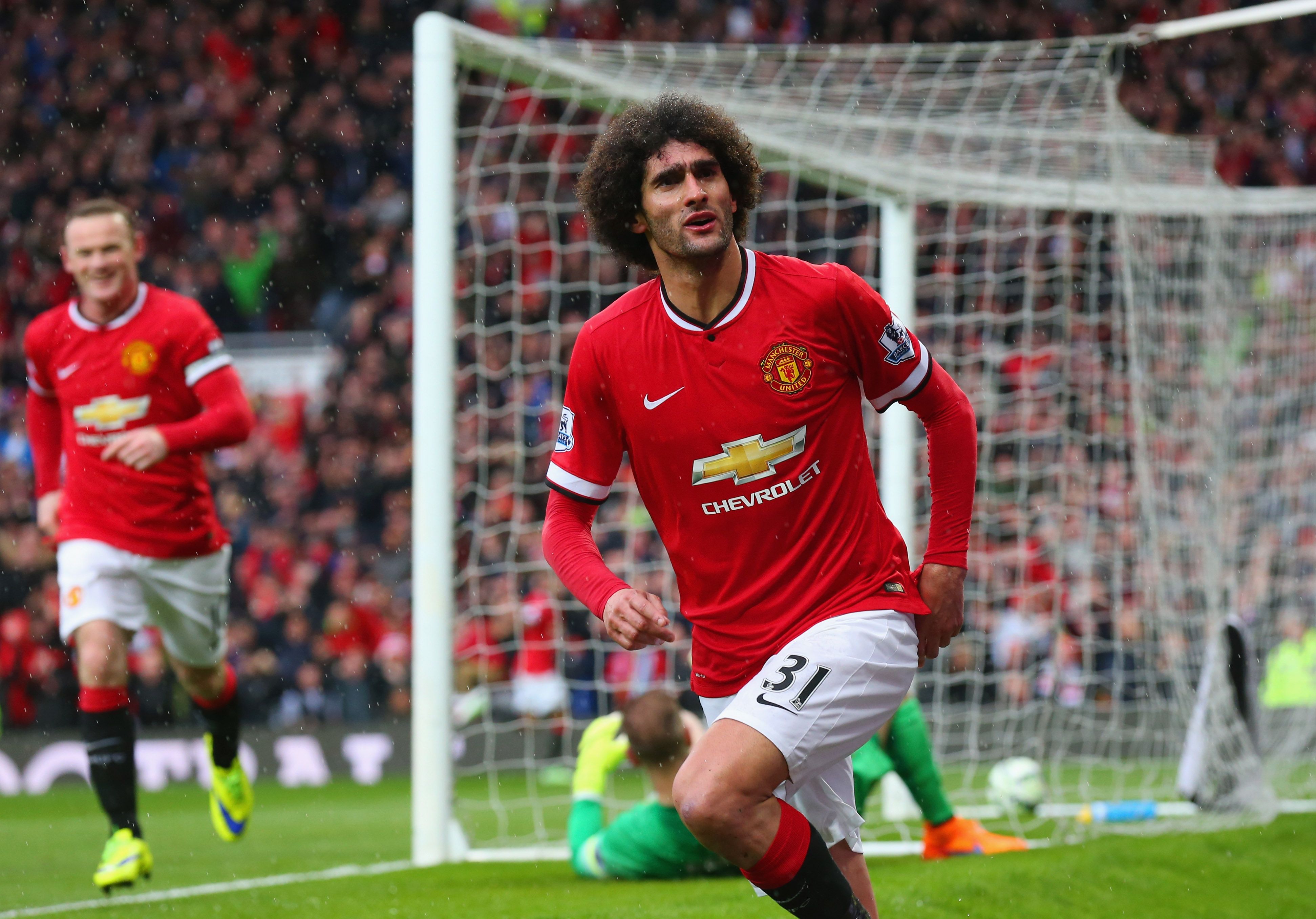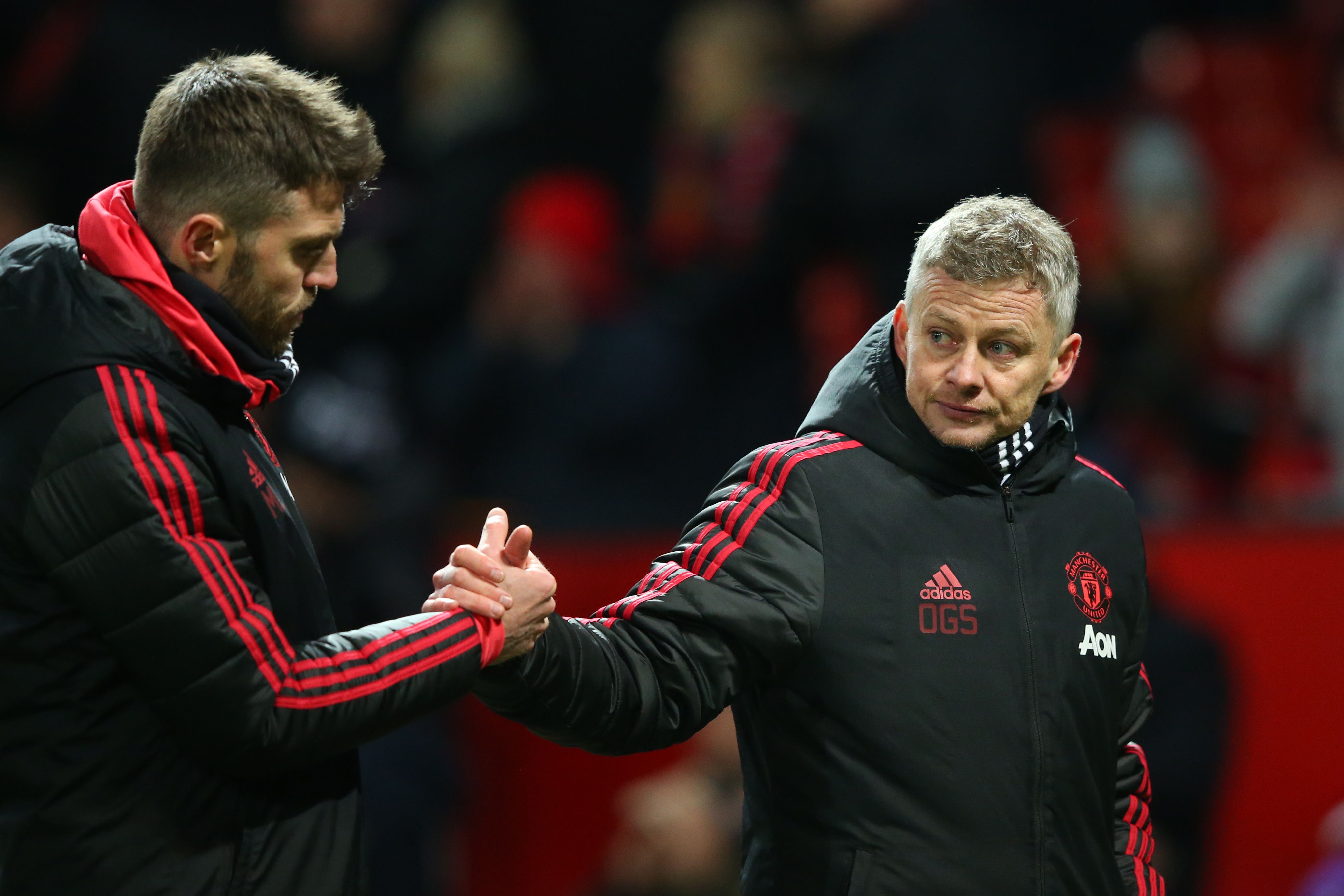He symbolises the failure of each Man United manager in the post-Ferguson years.
Teddy Sheringham, Dwight Yorke and Jaap Stam. Robin van Persie, Andrei Kanchelskis and Dimitar Berbatov. Marouane Fellaini played more times for Manchester United than any of these players.
He was one appearance from matching the total made by Duncan Edwards. Had he remained at Old Trafford until the end of the season – or rather, if Jose Mourinho had lasted – Fellaini would have played more games for United than Eric Cantona.
Considering the Belgian midfielder appeared to be a poor fit on his first appearance back in 2013, it is impressive and dumbfounding in equal measure that he managed to make another 176 for the most successful club in English football.
But the Fellaini era at United has come to an end, he has joined Shandong Luneng in China, and while he won’t be remembered fondly by all, the Belgian will never be forgotten.
On deadline day in September 2013, when United announced the signing of Fellaini from Everton for £24m, the sense of anti-climax was palpable and helped set the mood for the next few years at United.
The club floundered in the summer market following Alex Ferguson’s exit. David Moyes, an even worse fit than Fellaini for United, scrambled and hesitated as United failed to complete deals for Cesc Fabregas and Thiago Alcantara.
In Moyes defence, central midfield was such a priority because Ferguson had failed to address a clear and obvious problem with his squad.
The team badly needed a midfielder for several years, someone with the craft and drive required to make a difference in the most important position on the pitch.
Between 2007, when they signed Owen Hargreaves, and Ferguson stepping down in May 2013, United didn’t sign a single central midfielder.
In that time, Paul Pogba left on a free transfer. Paul Scholes retired, came out of retirement and retired again. Darren Fletcher had his career put on hold as he battled illness.
Anderson was given a new contract despite never looking capable of fulfilling his potential and Hargreaves’ career was effectively ended by a persistent knee injury.
Ryan Giggs, then 37, played in central midfield against Barcelona in the 2011 Champions League final. In one game against Blackburn Rovers in December 2011, United used Park Ji-sung and Rafael in central midfield.
Ferguson was such a genius that they still won four Premier League titles and the Champions League in these years.
But Moyes was no Ferguson and Fellaini wasn’t the answer to the team’s issues. To make things even worse, the Belgian referenced Roy Keane upon signing.
“Keane was an aggressive player who could win every ball. Maybe I can do this as well,” Fellaini said, ignoring the fact Keane was also excellent in possession. This was his first misstep.
Fellaini floundered as Moyes’ reign of terror limped from defeat to defeat, finally finishing in seventh place a season after being champions. The Belgian became a symbol of Moyes’ shortcomings and was the embodiment of his tragic, doomed tenure as manager.
Moyes bought Fellaini as a central midfielder when he didn’t have the technique or skill required to be effective in the middle of the pitch. At Everton, Fellaini played off the striker, plucked balls out of the air and brought his teammates into play as he swung his elbows and barged through opponents. Moyes never asked him to do this at United and was probably too worried about what the public perception would be if he did.
Like Moyes, Fellaini appeared laughably unsuited to United and completely out of his depth.
Louis van Gaal didn’t care what people thought. He was also destined to fail at Old Trafford, but for about a month in the spring of 2015, it briefly clicked for the Dutch coach and for Fellaini.
United beat Tottenham, Manchester City and Liverpool over the space of a month, with Fellaini playing a pivotal role in the club’s form. He scored the opening goal in a 4-2 win over City at Old Trafford and was given a standing ovation by United supporters.
Van Gaal found a way to fit Fellaini into a cohesive attacking unit, utilising his strengths as an advanced midfield destroyer. The Belgian won possession and brought his more technical teammates into possession and was vital in United’s win.
The United manager used Fellaini the way Moyes had at Everton.
But Fellaini was also there when it all went wrong for Van Gaal. Like his coach, the player’s impressive run of form in the spring proved to be a false dawn and his success was fleeting. By the winter, both men looked to be on borrowed time.
The former Barcelona coach never recovered from losing four games in succession in December 2015, when United suffered defeats to Norwich City, Wolfsburg, Bournemouth and Stoke City. Fellaini started all four matches. Like Van Gaal, he looked a poor fit for United and how the club’s supporters expected their team to play.
Some fans wrongly expected Fellaini to be sold by Mourinho. No chance. Instead, we saw the purest version of the Belgian, stripped down to his most primitive form.
Fellaini became a battering ram, Mourinho’s plan B and the one player he could truly rely upon. The former Chelsea manager pushed for United to extend Fellaini’s contract, bemoaned his absence and never spoke ill of him in public.
In the end, Mourinho had no ideas other than to hope to remain in a game for long enough before springing Fellaini from the bench to cause havoc in the opposition penalty area. Sometimes it worked, sometimes it didn’t.
But like the Portuguese coach’s time at Old Trafford, this proved to be a regressive, bankrupt tactic and ultimately pointless, unbefitting of the team with the largest wage bill in England.
Fellaini bailed his manager out with a last-minute goal against Young Boys back in November and rushed over to hug Mourinho – possibly the only United player who would have done so at that point.
But it just delayed the inevitable. Mourinho and Fellaini weren’t right for United. They were symptoms of the club’s shortsighted, muddled and flawed approach following Ferguson’s departure. The end for both came the very moment Fellaini hit a steward at Anfield with a wayward shot.
Fellaini has only played 31 minutes in eight games under Ole Gunnar Solskjaer – partly because of a calf injury. But it was obvious from Solskjaer’s first match as caretaker manager that there would be no place for the Belgian in United’s fast, fluid, attacking football.
Without wanting to be harsh on the player, Fellaini symbolises where past United managers went wrong. The swift decision to sell him sums up how Solskjaer has got almost everything right in the job so far.
However, that doesn’t mean Fellaini is a terrible footballer. He played almost 200 times for the richest club in the world and wouldn’t have done so if he wasn’t talented and extremely hard working. He was gangly, awkward and unorthodox, but not a bad player.
Fellaini also played 88 times for Belgium during a period when the country had world class players to call upon. But he was never right for United.
The post-Ferguson years at United should, in time, come to be known as the Fellaini years. The midfielder sums up the muddled approach, the short-sightedness and desperation that enveloped the club since 2013.
He symbolises the failure of each manager and even highlights some of the shortcomings of the late-Ferguson era.










































